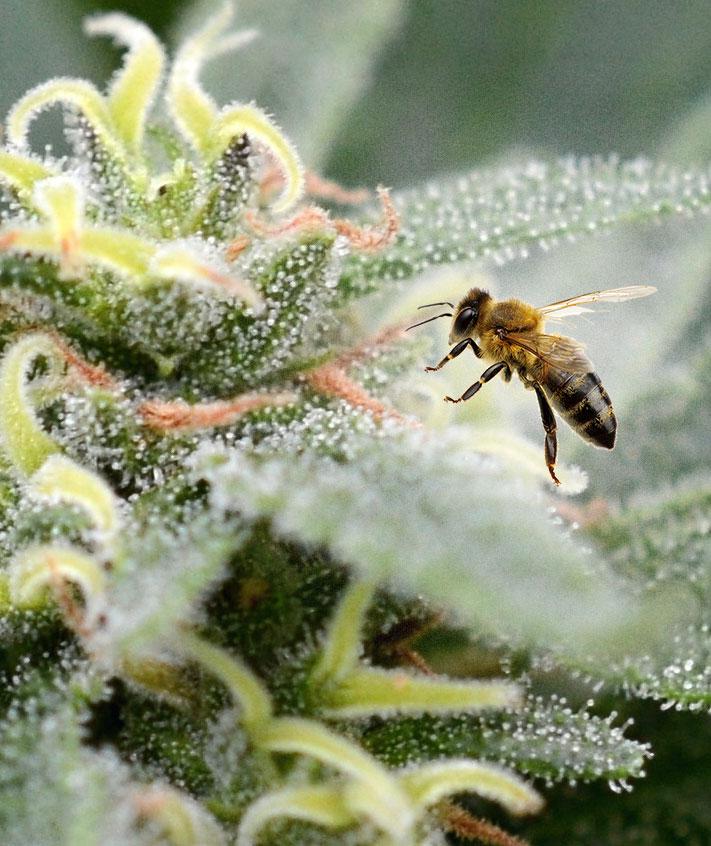Choose a different country or region to see the content specific to your location
Select Your Country/Region
Current Region:
 USA (EN)
USA (EN)
As bee populations face unprecedented challenges, from habitat loss to pesticide exposure, researchers are exploring innovative ways to support these essential pollinators. One surprising solution emerging is hemp.
Traditionally grown for its fibers and seeds, hemp can also provide a vital food source for bees during specific times of the year. Let’s dive into the science behind hemp pollen, its nutritional benefits for bees, and how this powerful plant could play a role in reviving bee populations.
Hemp pollen is produced by male hemp plants, which release large amounts of pollen grains into the air for wind pollination. Unlike other flowering plants, hemp doesn’t require bees or other insects for pollination, and it doesn’t produce nectar, the sweet substance typically associated with bee attraction. However, the abundance of pollen produced by hemp flowers—particularly during late summer—is highly appealing to bees.
One unique feature of hemp is its flowering season, typically spanning July through September. This period coincides with a time when other farm crops are often no longer blooming, leaving fewer pollen sources available for bees. During this “pollen scarcity” period, hemp flowers act as a timely food source for various bee species, helping to support their dietary needs when other plants are not in bloom.
Pollen is a critical source of protein for bees - it fuels their growth, reproduction, and immunity. While hemp pollen lacks nectar, its rich protein content makes it highly nutritious. This protein serves as a fundamental building block for:

With the passage of the 2018 Farm Bill, industrial hemp cultivation was federally legalized in the United States. This legislation not only opened doors for hemp-based products but also increased the availability of hemp as a crop in various regions. As more farmers began growing hemp, bees were presented with new and diverse sources of pollen, offering them a lifeline during times when other resources were limited.
In a study conducted by Colorado State University, researchers observed nearly 2,000 bees from 23 different bee species collecting hemp pollen, with classic honey bees representing half of the sample. This shows that hemp pollen doesn’t only benefit honey bees—it supports a diverse community of wild bee species as well. This diversity is critical to overall ecosystem health and ensures that a wide range of pollinators have access to the resources they need to thrive.
Population of bees have been in steady decline due to several interconnected factors:
Hemp can help address these challenges by providing a consistent source of pollen that boosts nutrition, especially when other plants are not flowering. This simple, natural solution can help bees overcome the seasonal shortages that contribute to their decline.
Health As hemp cultivation expands, so does its potential to impact the bee community positively.
By including hemp in crop rotations or as a secondary crop, farmers can contribute to bee conservation efforts in ways that also align with sustainable agriculture. Hemp’s ability to fill a critical seasonal gap makes it a valuable asset in the broader movement to support pollinators and restore ecological balance.
How can we help you?